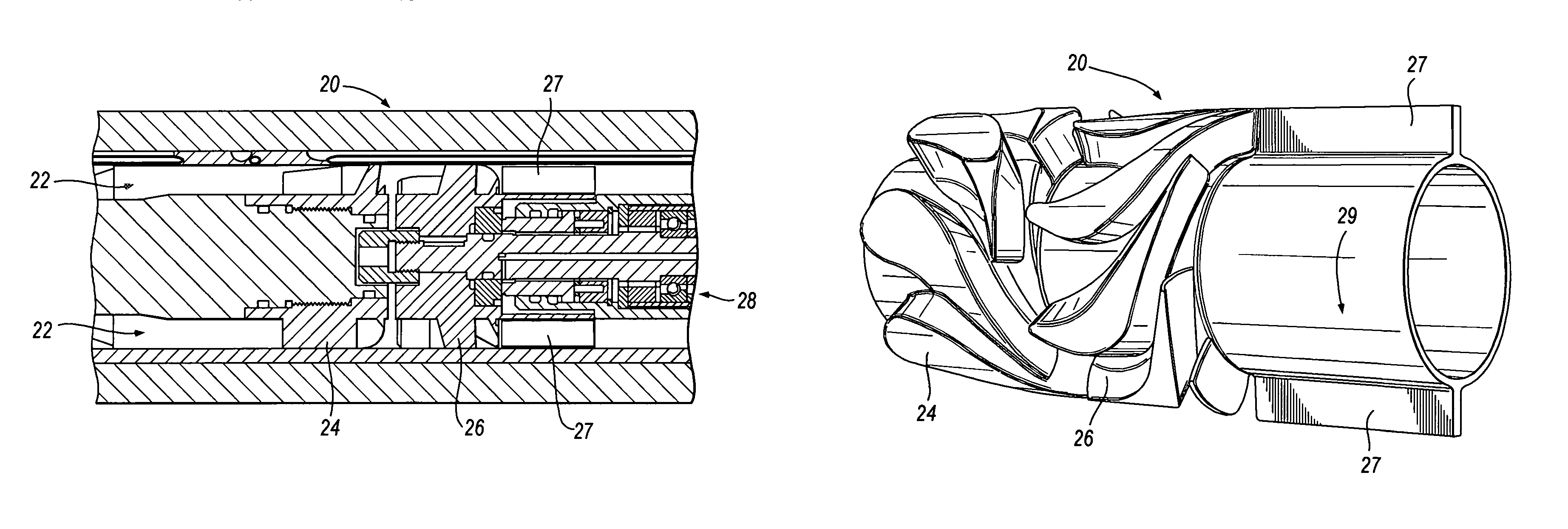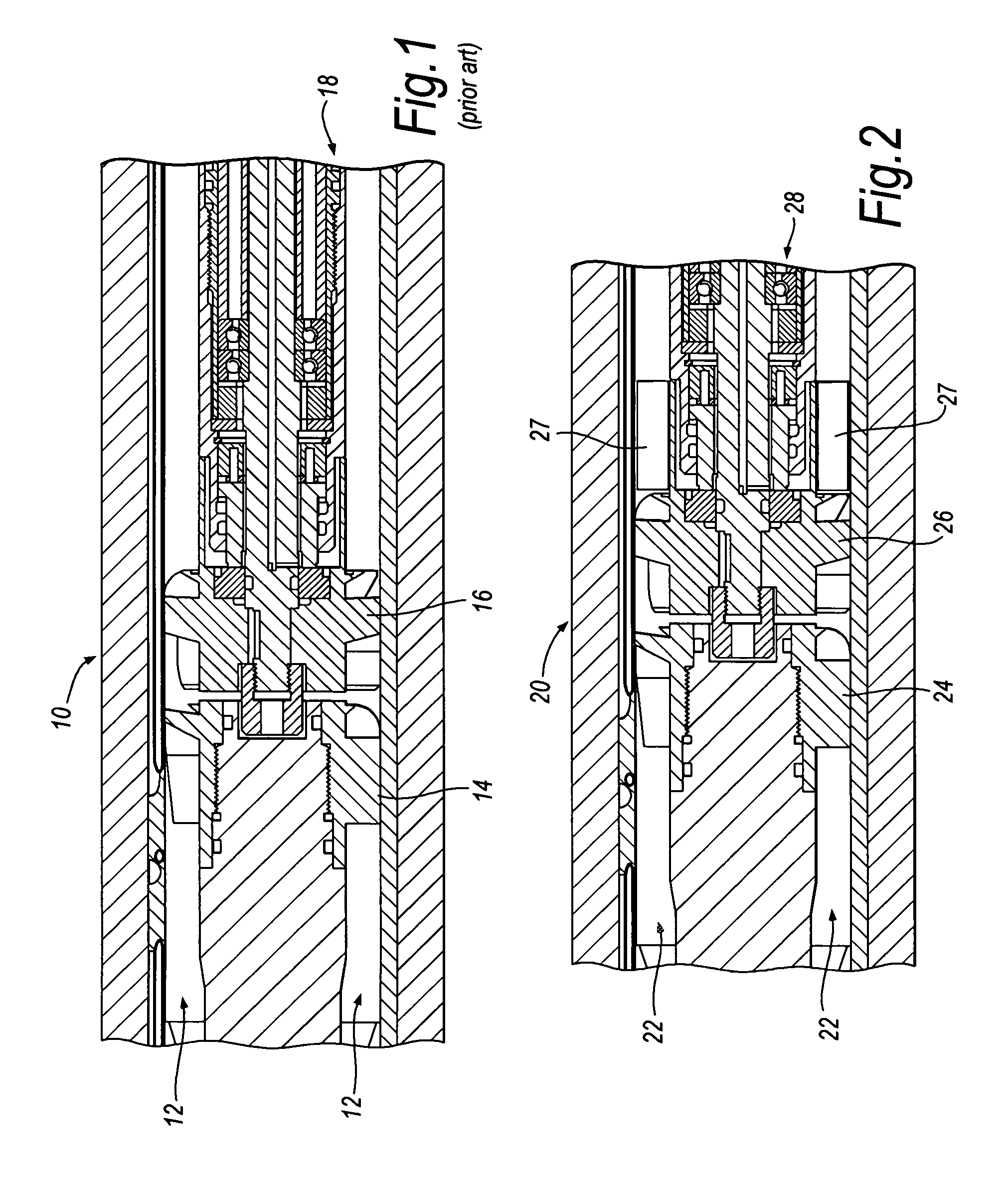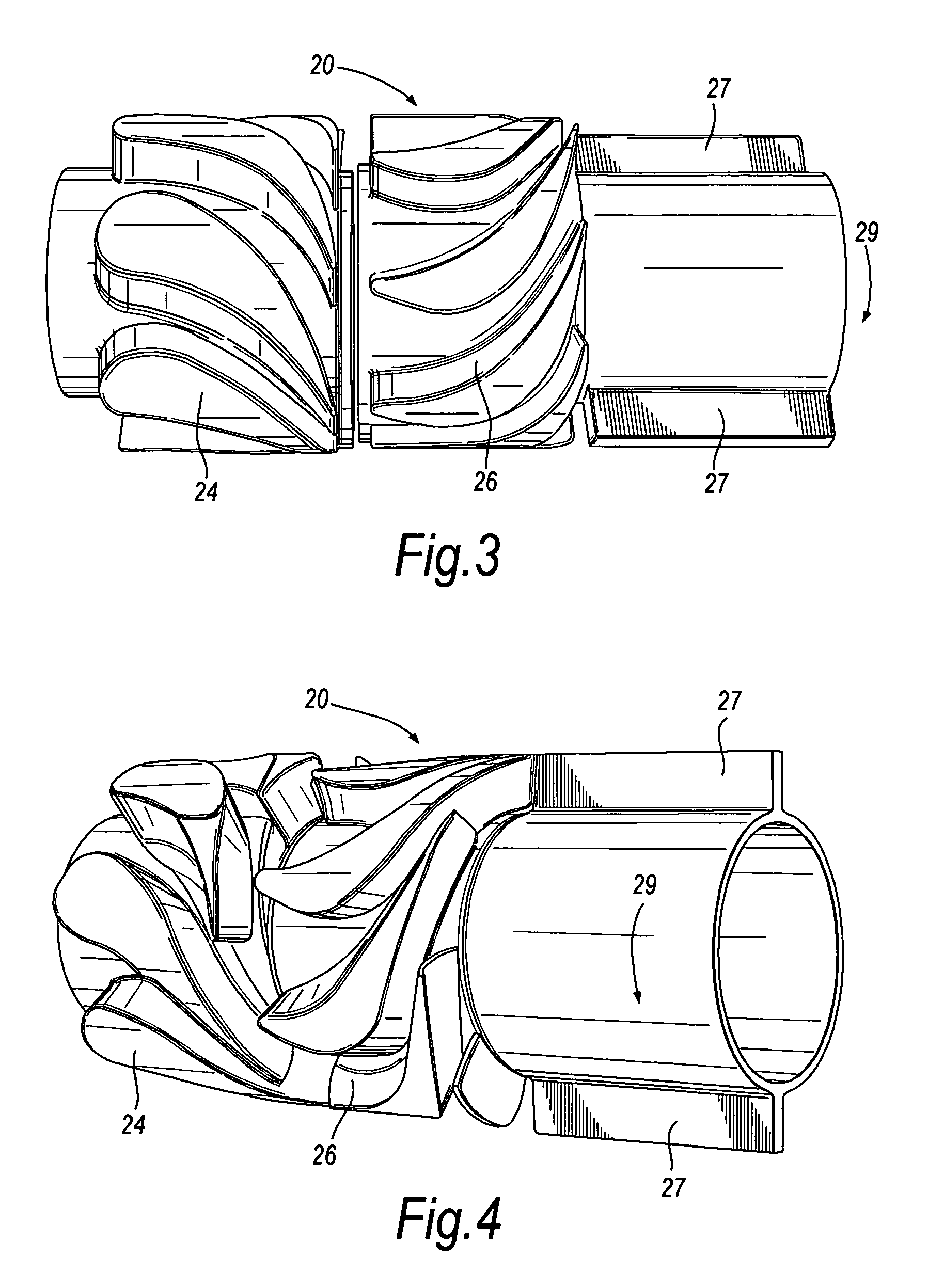Method and apparatus for extending flow range of a downhole turbine
a turbine and flow range technology, applied in the direction of machines/engines, stators, liquid fuel engines, etc., can solve the problems of not providing techniques capable of extending the flow range, and achieve the effect of increasing fluid flow, extending the flow range, and increasing the fluid flow
- Summary
- Abstract
- Description
- Claims
- Application Information
AI Technical Summary
Benefits of technology
Problems solved by technology
Method used
Image
Examples
example 1
[0064]The extension of the flow rate range resulting from use of a braking fin is depicted graphically in FIGS. 15a-15b and 16a-16b. Using a turbine and overall electrical and mechanical system parameters in a typical system to drill and measure 8.5 inch well bores, the overall estimated power and operating points can be modeled for systems with and without braking fins. FIGS. 15a and 16a illustrate the computation results for a system without braking fins at 300 gpm and 720 gpm water flow, respectively. FIGS. 15b and 16b illustrate the computation results for a system with braking fins at similar flow rates such that a direct comparison can be made. Each graph shows two power calculation results—the curved dashed line represents the net power resulting from the shaft rotation, and the solid curved line represents the power that can be generated from an electrical, mechanical, or hydraulic device operated by the rotor rotation, used to convert shaft rotation power to usable work (a ...
example 2
[0067]The extension of the flow rate range resulting from use of gates or extension elements is depicted graphically in FIGS. 17a-17c, where the lines represent data as previously described for FIGS. 15a-15b and 16a-16b. Again, using a turbine and overall electrical and mechanical system parameters in a typical system used to drill and measure 8.5 inch well bores, the overall estimated power and operating points can be modeled for systems with and without gates. FIG. 17a shows the model results for a system without restriction elements, where the stator area is not restricted, i.e. 100% open, and at a water flow rate of 200 gpm. Without restriction elements, the power generated from the turbine is below the threshold power required to operate the tool. At the same 200 gpm water flow rate, restricting flow through the stator, where the stator area is 50% open, results in power generation that allows the tools to operate, as shown in FIG. 17b. At a flow rate of 680 gpm water, the rest...
PUM
 Login to View More
Login to View More Abstract
Description
Claims
Application Information
 Login to View More
Login to View More - R&D
- Intellectual Property
- Life Sciences
- Materials
- Tech Scout
- Unparalleled Data Quality
- Higher Quality Content
- 60% Fewer Hallucinations
Browse by: Latest US Patents, China's latest patents, Technical Efficacy Thesaurus, Application Domain, Technology Topic, Popular Technical Reports.
© 2025 PatSnap. All rights reserved.Legal|Privacy policy|Modern Slavery Act Transparency Statement|Sitemap|About US| Contact US: help@patsnap.com



